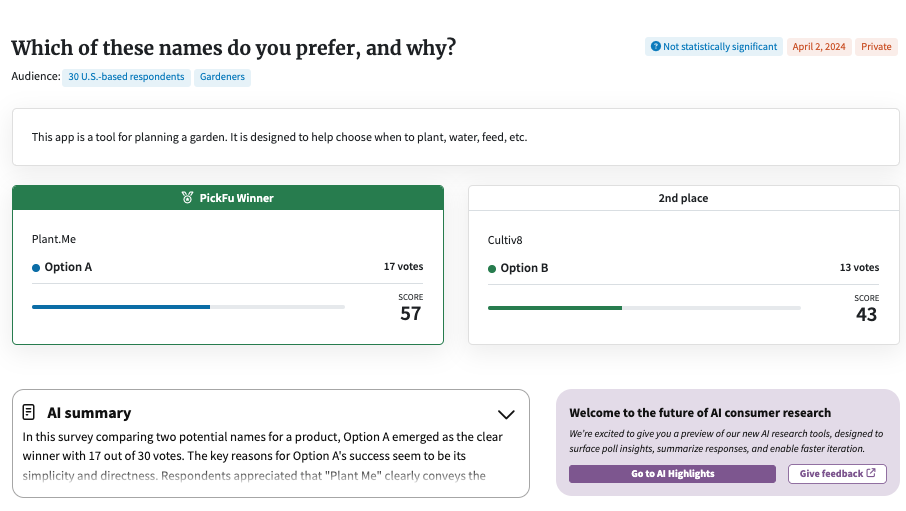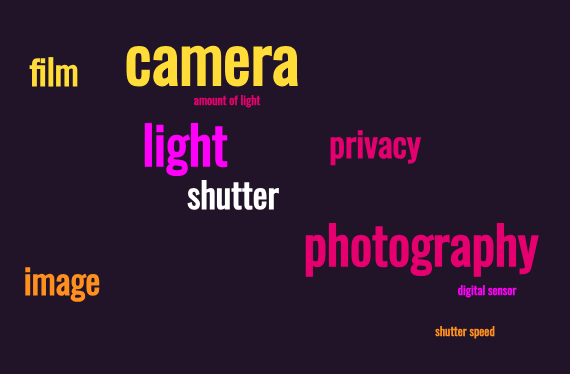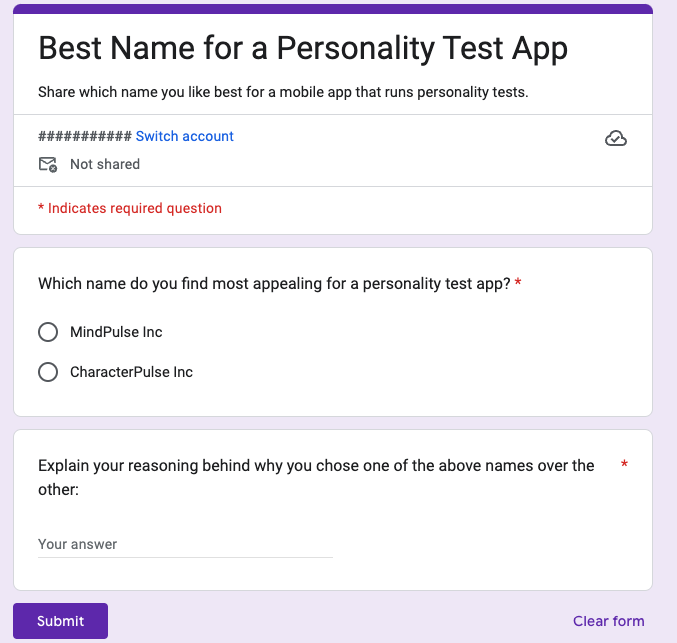What’s in a name? Well, with apologies to Shakespeare, a great deal.
Apps can be made or broken by their name. Great app names become part of the lexicon and turn app brands into household names. And with hundreds of thousands of apps to compete with in the Apple App Store and Google Play store, it’s important to make your app stand out.
In this post, we’ll share best practices for choosing the perfect app name – including examples, best practices, things to avoid, and helpful tips and app marketing tools.
Most popular apps in 2024
First, let’s take a look at last year’s most popular apps – and what their names have in common.
The 10 most popular apps in 2024 according to businessofapps.com reflect a trend of brevity and memorability in their names:
- Temu (103 million downloads)
- TikTok (52 million)
- CapCut (42 million)
- Instagram (37 million)
- Shein (35 million)
- Monopoly Go (33 million)
- WhatsApp (32 million)
- HBO Max (29 million)
- Facebook (27 million)
- Telegram (26 million)
In the fitness category, the most popular apps have words related to fitness in their name:
- fitpro (45 million downloads globally)
- Flo (37 million)
- Da Fit (36 million)
- Home Workout – No Equipment (27 million)
- Blood Pressure App (23.8 million)
Some of the most recognized app names in the public eye include RocketMoney, MyFitnessPal, and UberEats. These apps trade brevity for clarity. That is, they don’t mind being a little longer because their names help explain what exactly they do.
Other apps don’t have any clear connection to their purpose. Zoom wasn’t synonymous with video calls until all of a sudden, due to its popularity exploding, it was. But the use of a short, easy-to-remember, versatile word as its name helped Zoom become a household name that people use in place of “virtual meeting.”
Shazam is another app name that doesn’t have a direct connection to what it does, but millions of people use the word “Shazam” as a verb today when trying to find out the name of a song.
The point is, the most popular apps across categories generally follow at least one of the following with their names:
- Catchy and memorable
- Descriptive
- Versatile (can be used as a noun or a verb)
Users tend to like names that are memorable and explanatory. We ran a Head-to-Head app name test on PickFu to find out how users would respond to the names Plant.Me and Cultiv8 for a gardening app. Plant.Me won with 57% of the vote.
The AI-generated summary of the poll responses demonstrates the value of a simple and straightforward app name vs the more “clever” name:
“The key reasons for Option A’s success seem to be its simplicity and directness. Respondents appreciated that “Plant Me” clearly conveys the purpose of the app without any ambiguity or unnecessary embellishments. Unlike Option B, which some found to be clever but potentially confusing or reminiscent of other products like energy drinks, Option A stood out for its straightforward approach and easy-to-understand message.”
What good app names have in common
To summarize our points above, the best app names are catchy, memorable, versatile, and/or help you understand what they do. Now let’s dive into what else good names have in common, and things to keep in mind as you brainstorm your app name.
One-word app names seem the most popular, and have better recall. Part of this is because our minds crave simplicity. This is a tested psychological phenomenon, and shows that people’s minds naturally gravitate towards easier words and concepts.
There are three key things you need your app name to do:
- Capture users’ attention
- Stick in people’s minds
- Explain what your app does
Although that last point is somewhat optional or flexible, the core of your app’s name should still come from your app or brand’s overall purpose. It shouldn’t be totally unrelated to your mission.
Twitter (now X) is one good example. Its name conveys the the concept of a widespread conversation, people “twittering” about different topics – with a little excitement and whimsy thrown in.
Some questions you should ask when brainstorming app names are the following:
- What does my app do?
- What is my app’s mission?
- Who is my app’s audience?
- What does my audience care about? What are they looking for?
Asking these questions will give you some basic ideas and keywords to use when coming up with name options.
Another good question to ask is, “What are some of the words associated with my app or its industry?” For example, if your app is a photography tool, words like “shutter,” “flash,” “exposure,” or “aperture” could all make sense.
A word cloud can help you discover interesting name ideas. You might even generate a word cloud in your chosen field or industry, which you can then use for app name inspiration.
This leads to name ideas like Instagram. Instagram is a portmanteau (two words joined together) of instant and pictogram – because you can instantly share pictures with it.
It definitely helps to understand your target audience, too. Language is fluid and dynamic, and words that are hip for boomers, mint for Gen X, or cool for millennials might be cringe for Gen Z.
Things to avoid when choosing your app name
There are plenty of ways to get it wrong when you’re choosing a mobile app name. Catchy app names are important, but don’t go out of your way to make something too abstract and hard to understand.
Weird spelling or formatting
If your app name has awkward spelling, special characters, or numbers in place of letters, it can be hard to find in the app store. A memorable name that’s easily searchable is an important component of app store optimization (ASO), which is how your iOS or Android app gets shown to the most users.
Inappropriate capitalization
All caps are typically not a good idea, as it can come across as aggressive, shouty, and hard to read. Some apps may use all lower-case letters, but this can also make apps seem less serious than they are.
Camel casing is a common approach – you’ll see that in words like eBay or iPhone. Camel casing is where you use one capital letter in the middle of a word to help define the brand and make it visually pop. In the case of FedEx, it’s two words separated by casing to help articulate the brand’s two core concepts: federal and express.
Camel casing is also beneficial if you have letters that look like a different letter when they’re next to each other in some fonts. For example, “il” could look like a u in some fonts, and two “n’s” or “rn” looks like m. Camel casing “rN” can solve that issue – but only if it works with the rest of your app’s name.
Imitation
Copycats rarely prosper. There was a trend early in the days of the App Store for apps to be named “iAppName.” This just created confusion and prevented users from seeing those apps as unique or special. Above all, your name should be original and authentic.
4 steps for creating high-quality app names
Apart from evaluating the marketplace, understanding your own product, and researching trends that impact your target audience, here are a few more helpful tips for choosing a successful app name.
- Do keyword research
Use tools like Google Ads or Search Console to find relevant keywords users are inputting into search engines for your app category or industry. These words won’t only help with search engine optimization (SEO) and app store optimization (ASO), but can also help you find ideas that will make your app name more memorable to your target market.
- Use an app name generator
A business name generator or app name generator tool can help you quickly and cheaply come up with ideas for your app. We put our garden app idea into Namify.Tech and quickly generated these business name ideas:
You can also ask AI tools like ChatGPT to give you name ideas based on your app category and keywords.
- Check availability
The best app name generators often include tools to check existing web domain availability on a platform like Godaddy or Squarespace, as well as public records for trademarks and intellectual property protections.
However, those automated checks aren’t foolproof. You should take any name you generate to the app store of your choice, Google, and even social media to make sure it hasn’t already been claimed.
- Test your app names with consumers
Market research is a critical part of the app development process, and choosing the right name is no different.
You can test your name idea with friends, colleagues, and relatives – or do more formal testing with people who are actually in your target audience.
Live A/B tests in the app store can help you show two versions of your app, and after you have enough data, you can choose the name that drew more clicks and downloads.
However, live A/B testing can be time-consuming as you wait for enough data to make your decision – not to mention it might be confusing for users once you select your final name.
That’s why it’s best to test your name before you actually launch your app. You can do this by A/B testing in a private, non-live environment with a focus group, email survey, or a dedicated consumer insights tool like PickFu.
You can also use AI brand name or name test apps like EatMyWords to analyze your potential brand:
A lot of tools give you the hard data behind your app name choices – but to truly understand why your app name does or doesn’t work, you need the human touch. That’s where PickFu comes in.
How PickFu can help validate your app name ideas
PickFu is a do-it-yourself survey and polling platform that allows app designers to A/B test app name ideas with their target audience. That’s because PickFu has a built-in pool of over 15 million respondents across several countries and 90+ demographic subsets.
You can drill down to the exact consumer you’re hoping will download and use your app and get rapid feedback and actionable insights into your name options.
There are even business name test and product validation test templates to make it easy for you to get feedback on your ideas.
You can choose from flexible testing formats, including:
- Ranked poll – ask the audience to rank up to eight options
- Head-to-Head poll – the audience will vote between two options, like an A/B test
- Open-Ended poll – ask an open-ended question about your app name, and the audience will answer
With every poll, respondents will share written comments about why they chose the option they did. To make it easier to sort through all the feedback, we also include an AI-generated summary that provides clear, actionable guidance on the common themes, likes, and dislikes.
In this example business name test, we tested names for an app that helps shoppers choose clothing colors. One of the themes that popped up was the use of “AI” in “Aid” to convey that the app uses AI tech.
“Participants consistently valued names that clearly communicated the app’s function – aiding in selecting clothing colors using AI technology.”
Then we ran a follow-up poll to choose the best capitalization of the app name:
Since polls typically finish within a couple hours, PickFu is a great way to get fast feedback and ideas for improving your app names.
You can also use the platform for prototype testing and validating your app concept before you start developing.
Ready to test your app names? Sign up for PickFu and get survey responses within minutes.
App name FAQs
How do you create a unique name?
It’s easy to create a unique app name by understanding your potential users, focusing on the core features of your app, and testing any name suggestions with market research. You should also research domain names to find inspiration. While a .com domain is popular, other domain extensions like .me can help you create more engaging and creative app names.
Why a branded name?
Branded names for your app make it more memorable and appealing. The perfect name represents your brand identity and helps connect your customers to the app in a more meaningful, engaging way. This is why we advocate against generic names like “car shopping app” or “parking garage finder” – because while they’re descriptive, they don’t have any staying power in the minds of your customers.
What makes a good app name?
The right name gives a strong first impression, sticks in the minds of your target market, and sounds pleasing to say. Short, punchy names that communicate the purpose of your app will always be more successful than long, complicated names that are confusing or distracting.
Can I trademark my app name and how?
Yes, you can trademark your app brand, name, and logo. To do so in the U.S., you need to fill out and submit your trademark application to the United States Patent and Trademark Office.







